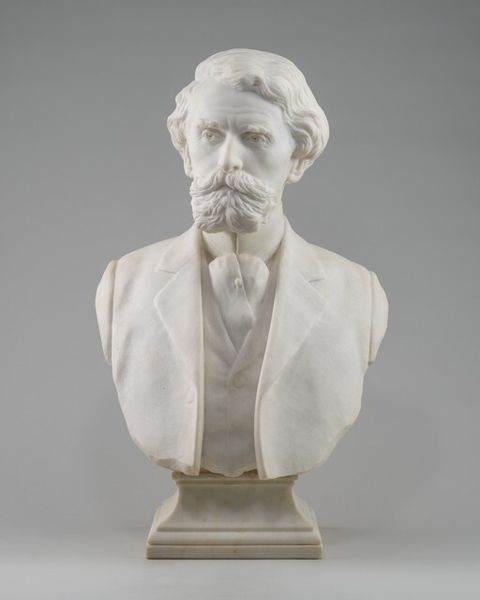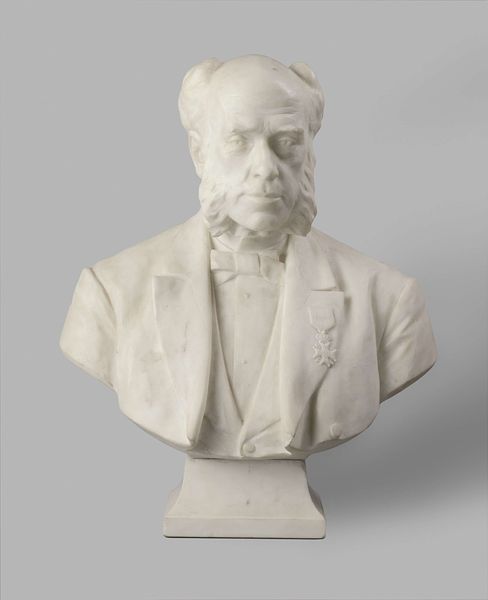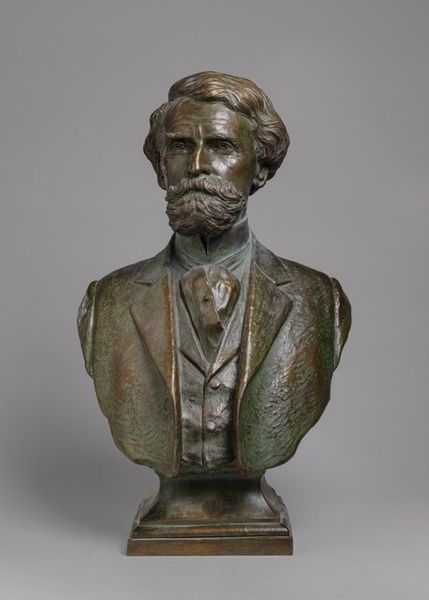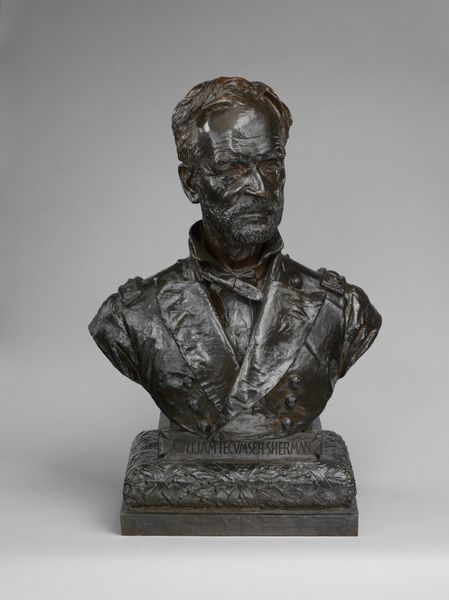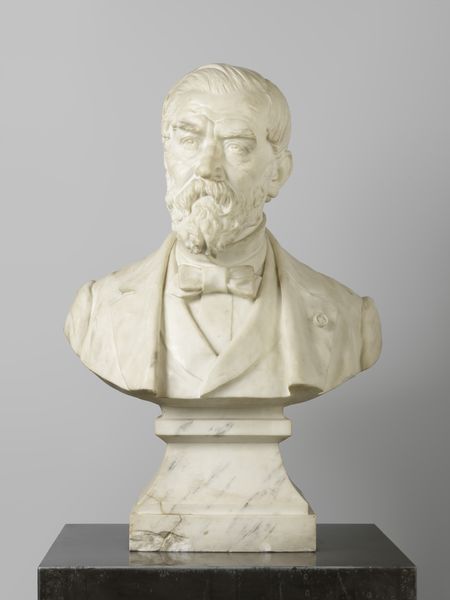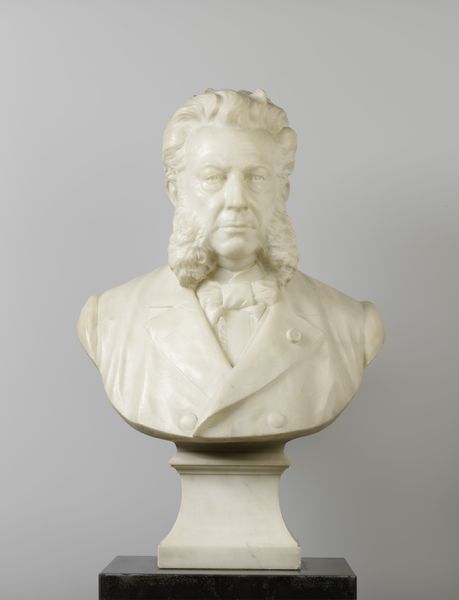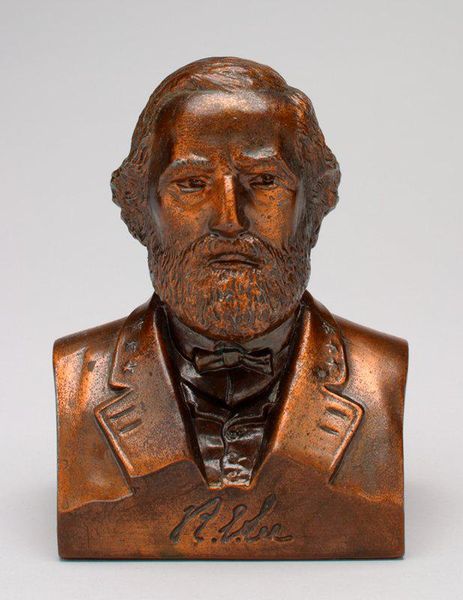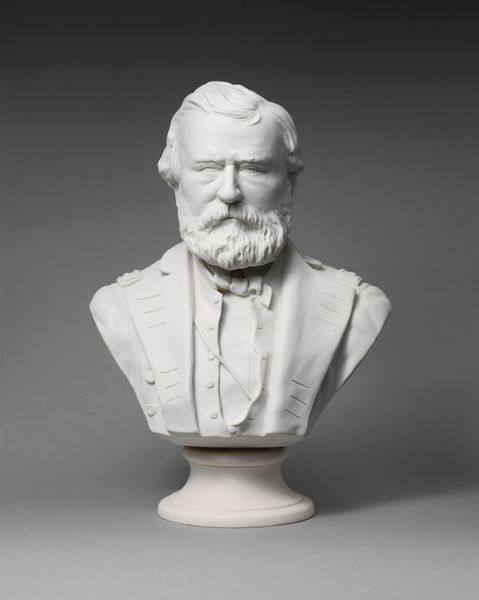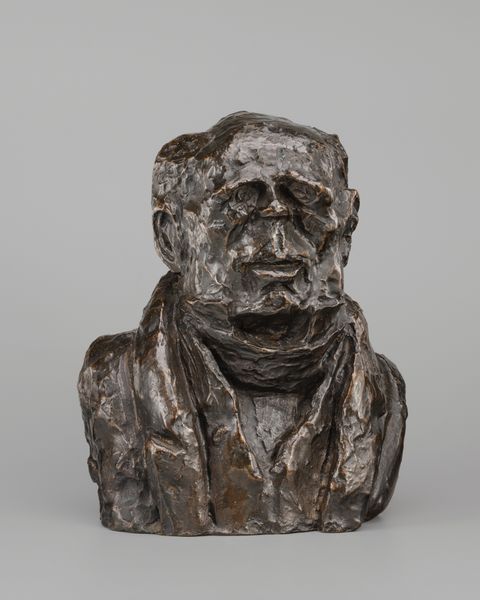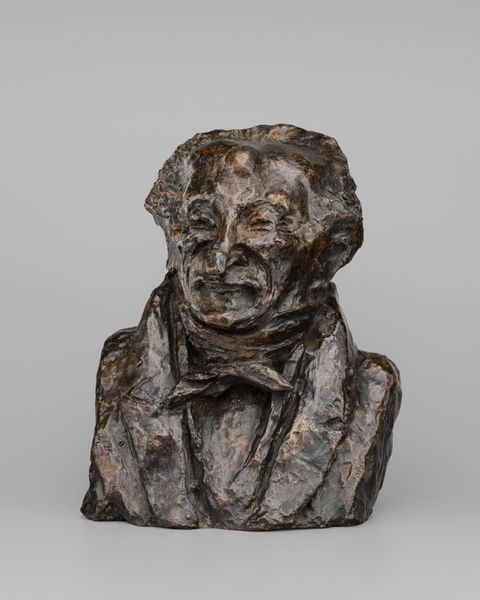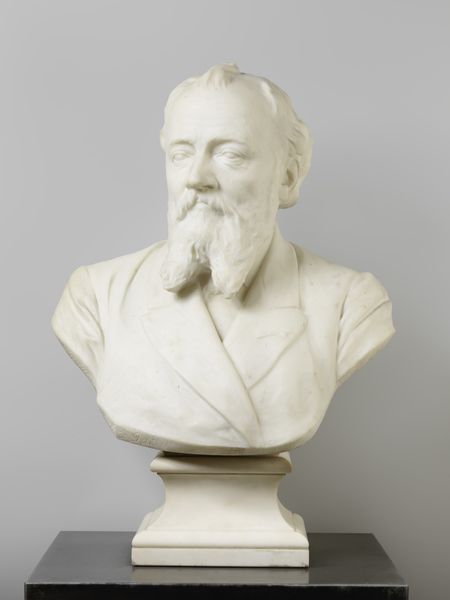
bronze, sculpture
#
portrait
#
bronze
#
figuration
#
sculpture
#
realism
Dimensions: 66 × 48.2 cm (26 × 19 in.)
Copyright: Public Domain
Editor: Right in front of us, we have "James H. Dole (1824-1902)," a bronze sculpture from 1894 by Johannes Sophus Gelert, housed here at the Art Institute of Chicago. He has such an intense gaze. How would you interpret this piece? Curator: Looking at it from a historical perspective, portraits like this one often served specific purposes. It wasn't just about capturing a likeness. Think about who James Dole was and the socio-political context of the 1890s. Editor: I imagine this commission honored a prominent member of society? Curator: Exactly! It’s interesting to consider why bronze was chosen as the medium. Bronze has this air of permanence and authority, doesn’t it? What do you notice about his clothing? Editor: He's wearing a very conventional suit, with every detail carefully represented. It all adds to that air of respectability. Curator: Precisely. Consider this: Who usually commissioned or appeared in public art in 1894? Often, it was those reinforcing certain power structures. Public art serves to celebrate people, ideals, and sometimes ideologies that dominant institutions found useful or necessary to promote. The bronze in museums may tell some stories while omitting others. Editor: So, this sculpture, in its time, would have had a lot to say about social values and status? Curator: Absolutely! Art, particularly public art, is deeply embedded within socio-political currents, always speaking to power, influence, and the very fabric of the society in which it exists. It’s interesting to consider what gets remembered, and how. Editor: That really gives me a different way of looking at portraiture! I never considered it so closely linked to public roles. Thanks! Curator: It has been my pleasure. We need to view portraiture beyond mere aesthetics to appreciate its impact on our cultural memory.
Comments
No comments
Be the first to comment and join the conversation on the ultimate creative platform.
